
Over the years, publishers have discussed how Facebook has become a failing strategy for their content operations. Sometimes, website traffic was completely decimated when Facebook turned off a website’s waterfall.
Most famously, Little Things shut down overnight, citing a 75% dropoff in viewership. While Little Things has returned thanks to new ownership and a multi-faceted traffic strategy, other publishers have not been so lucky.
In some cases, link spamming (sharing nothing but links on a Facebook page) has caused the downfall of specific publishers. In other cases, a complete failure to engage with a brand’s audience is at fault. While there is no perfect answer for managing every Facebook audience, there are some very specific ways a page owner can improve the health of their page.
Building For Facebook Reach At Valnet
From August 1, 2023, to August 1, 2024, our social team at the Odyssey Group (Valnet Gaming) experienced a massive increase in Facebook reach among our followers, with non-followers leading the charge with a 35.1% YoY rise to more than 1.2 billion.
Total Impressions
1.6B
+25.6%
Total Reach
1.5B
+25.6%
Total Fan Impressions
370.5M
+1.6%
Total Non-Fan Impressions
1.2B
+35.1%
To reach those levels, our team has significantly emphasized community building, primarily by constantly testing content types, engaging in direct conversations with our community and non-community members, and optimizing videos both in short (reels) and long forms.
Understanding what Facebook looks for from pages and examining how audiences engage with your brand on the platform is at the core of building a healthy Facebook strategy.
Engagement Over Link Clicks
Just as an SEO specialist focuses on specific content-based and technical standards for optimizing content for Google SERP, optimizing for Facebook requires a deep understanding of what the platform expects to see from content posted across its ecosystem.
On-Page Engagement Fuels Facebook Page Growth
Facebook makes money when users remain on its platform for extended periods. Therefore, it makes sense that Facebook is willing to reward pages that deliver high on-site engagement.
However, not all engagement is created equally. After years of data gathering and research, and with the information provided in public Facebook blog posts, we’ve determined that some interactions are more valuable than other forms of engagement.
Our engagement focuses on the following types of interactions, ranked from most important to least important (based on gaming page performance).
Healthy Facebook Comments
Comments are the bread and butter of Facebook engagement. The more individuals comment on a page, the more likely they will remain on the platform. This helps build stronger communities, which in turn allows for increased on-page engagement.
While comments are important, equally important is ensuring that they are non-toxic and “healthy,” as Facebook describes them. Meta noted in a blog post that healthy conversations within posts are rewarded.
A study from researchers at Stanford and Cornell revealed a direct link between the first posts users see and how they engage with those posts. Researchers determined that “both negative mood and seeing troll posts by others significantly increases the probability of a user trolling, and together double this probability.”
We often use Facebook’s “First Comment” feature to engage our audiences. When a news story breaks, we create photos or photo galleries that showcase the breaking news and provide a “First Comment” with a link to our breaking news story.
Within those first comments, we often share links to breaking stories and ask questions about the stories that resonate with readers, leading to conversations.
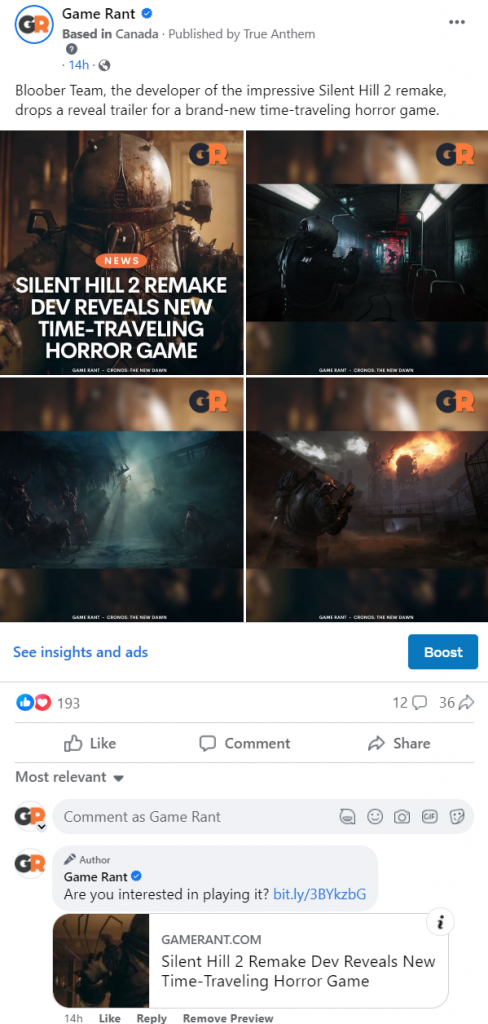
Our social media managers (SMCs) actively engage with our audience, leaving regular replies when our audience comments while asking relevant questions to those comments, spurring deeper comment threading, which creates genuine conversations that add value to our Facebook posts.
Along with simply spurring conversations, we also actively monitor our Facebook account to remain engaged with the answers we receive.
Pro Tip: Start your moderation journey using Facebook’s built-in tools. Visit https://www.facebook.com/professional_dashboard/moderation_assist from your Facebook page and choose which comments will be auto-hidden (but not deleted).
Here’s how we set the Game Rant page:
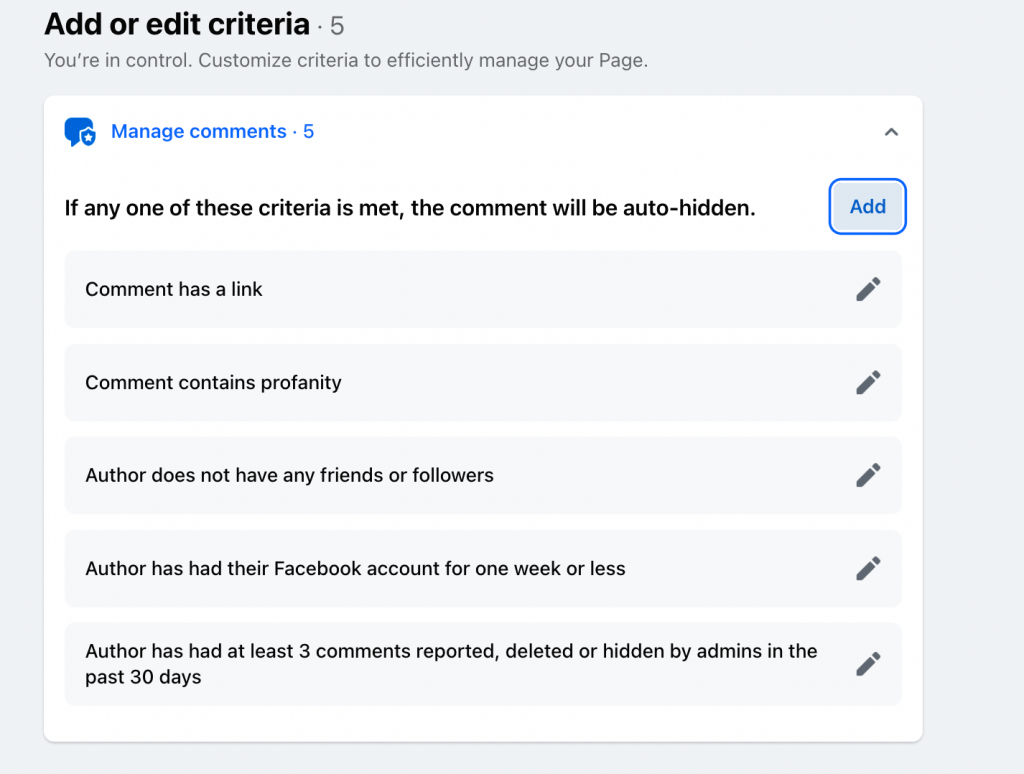
It’s not a perfect system, but because we receive over one billion impressions per year from Facebook, it helps remove some of the noise.
Facebook Shares
Creating shareable stories that resonate with your followers is essential to our strategy. While Meta has never ranked engagement directly, we know that posts are shared with a much larger non-Facebook audience thanks to Meta’s focus on becoming a more robust recommendation engine.
We diligently track our content to understand how each content type performs via shares. Using the True Anthem social media platform, we can categorically break down our content into categories, tags, and content types.

Links with a higher CTR showcase more direct engagement on our publications, often leading to higher share counts. If users are passionate about a topic and click to read a story, the chance of shares increasing is drastically increased.
Certain topics also lend themselves better to higher engagement. The photo above shows that console-specific content performs very well, as do new game releases. While there are apparent wins, there are also times when specific content sub-segments resonate with our audience, and we lean into those pieces of content whenever possible.
Reactions
It’s easier for a user to click the thumbs-up reaction or give us a smiley face, sad face, etc. From our work in the space, we’ve found these reactions to have the most minor effect on our pages. Still, users engaging with a page signal to Facebook that we understand the people visiting the various niches we cover at Valnet.
To this point, Facebook announced in a blog post that I can’t seem to find any longer that they would be serving more content to the top 30 pages that visitors frequent the most and in which they engage the most. A simple thumbs up by a user regularly signals to Facebook that our users want to see our content. This is true because our follower engagement increased by 1.6% to more than 370.5 million impressions at a time when Facebook reach has been a pain point for many page owners.
Not All Content Types Are Created Equal (Engagement Hacking)
It’s easy to look at a significant Facebook page and think to yourself, “wow, their memes do incredibly well; I’ll just post 20 memes per day.” However, that strategy will leave you with a lot of follower engagement and few new user opportunities.
Let’s take a look at some of the content types we focus on for the gaming vertical and why we use those content types.
Photos Are Great For Follower Reach
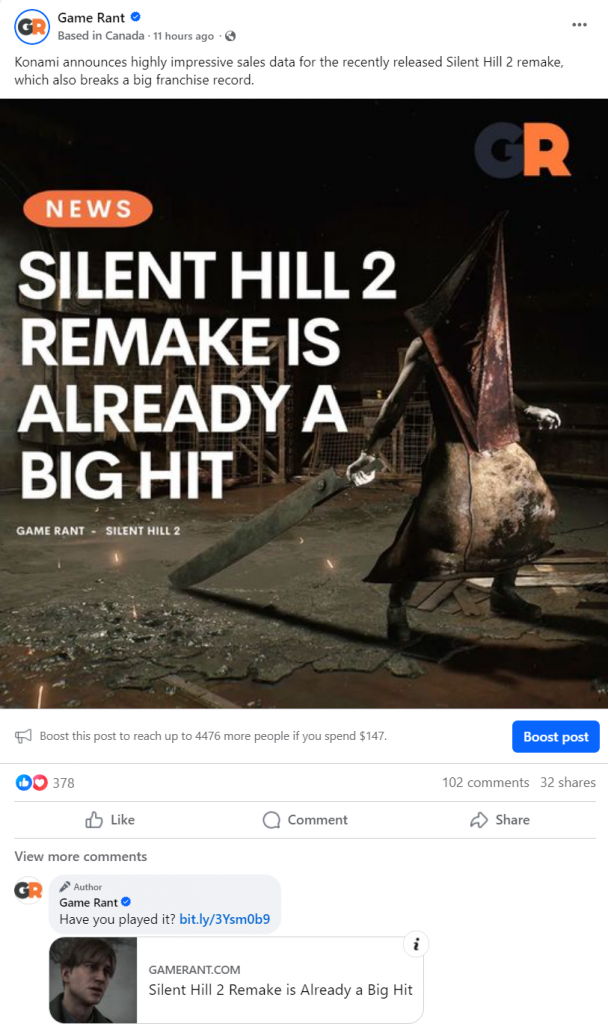
In a study I conducted on Game Rant (650K+ followers) and TheGamer (3+ million followers), I found that 100% of our photo posts reached a bigger follower audience than the non-follower audience. The follower reach was often 5 to 10 times higher than the non-follower reach.
Suppose your goal is to maintain your engagement with your followers. In that case, this strategy will serve you well, and I highly suggest you engage with those users through memes, interesting photo posts, and even breaking news photos that provide first-comment activations.
Reels + Videos For Non-Follower Activations
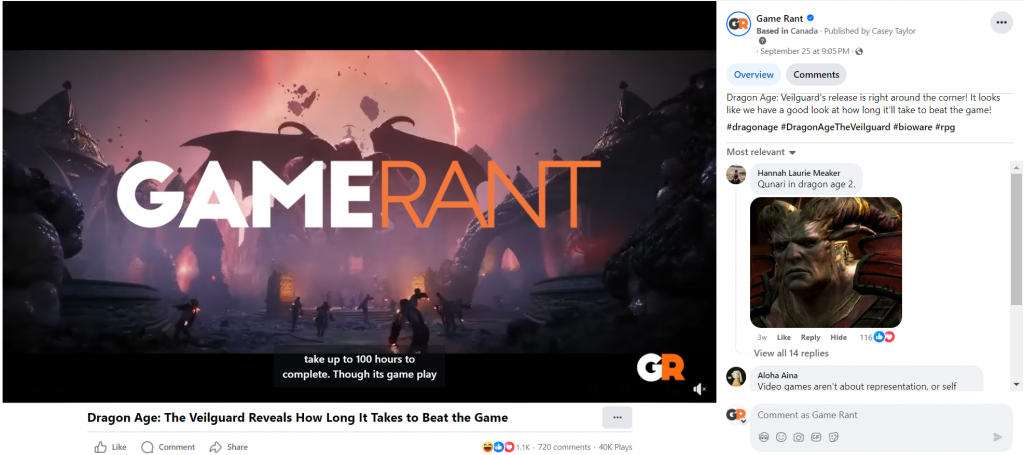
Reels and Videos 100% of the time were shared to non-followers more than page followers. In several viral videos that reached over one million views, we found that 90-95% of those views came from non-followers. As Facebook migrates towards an AI approach to content recommendation focusing on video, it makes sense that videos play a big part in helping users discover new pages they might want to follow that engage in unique video creation.
Here’s a breakdown of the video shown above, which fairly accurately represents the generalized reach for our videos and reels.
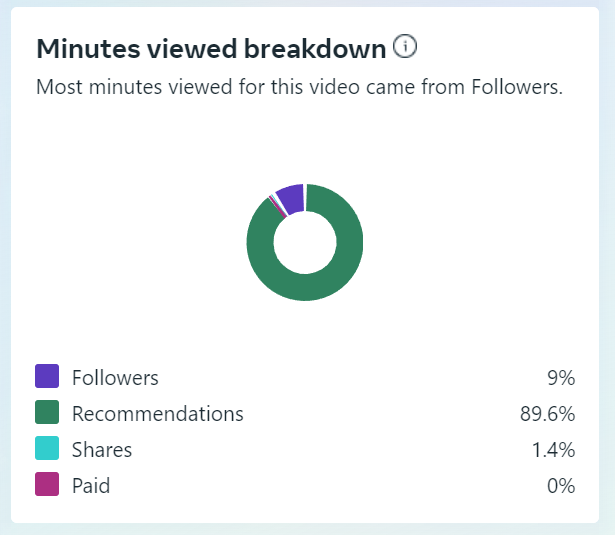
Videos are also the main driver of new followers for our pages. When we first started posting daily reels on the Game Rant and TheGamer Facebook pages, we saw a 900% increase in new followers. A single viral video that reached just over one million followers delivered 9500 followers to TheGamer’s page.
Facebook Stories
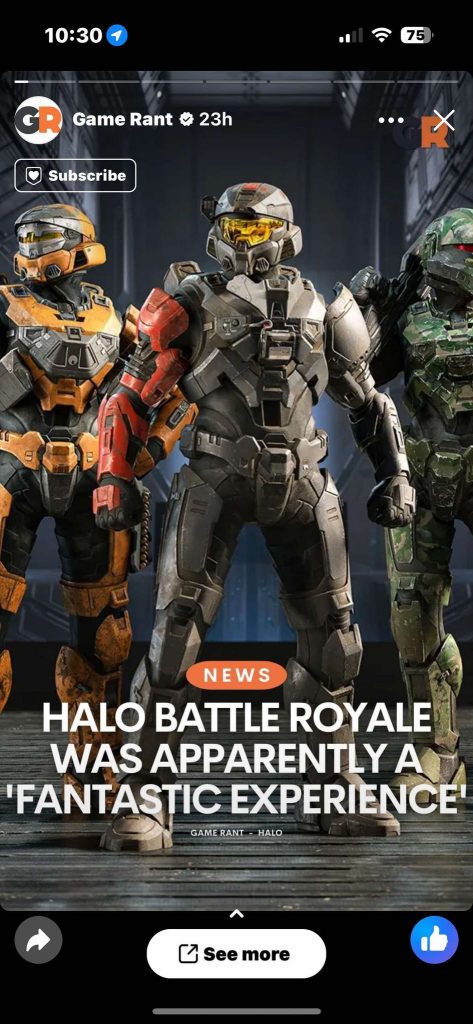
Facebook Stories provide additional and unique ways for us to interact with our Facebook audience while attracting new fans to our gaming pages. We often use stories to showcase breaking news, providing a secondary method for gaining user attention.
Alongside news stories, stories provide an opportunity to encourage engagement by hosting questions, polling, and other engagement touchpoints.
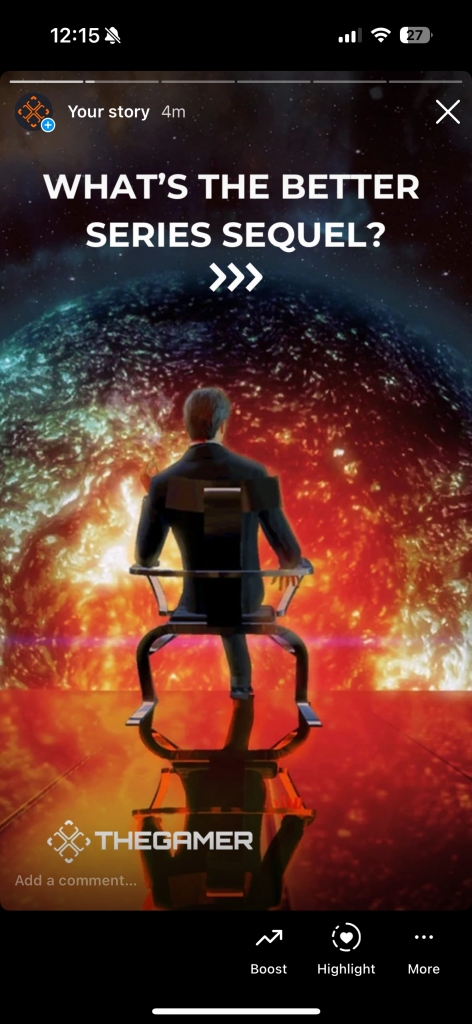
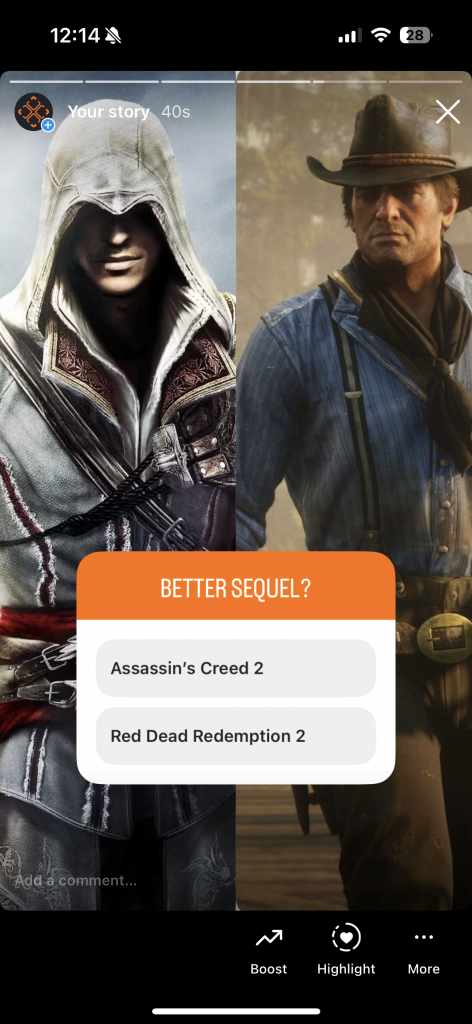
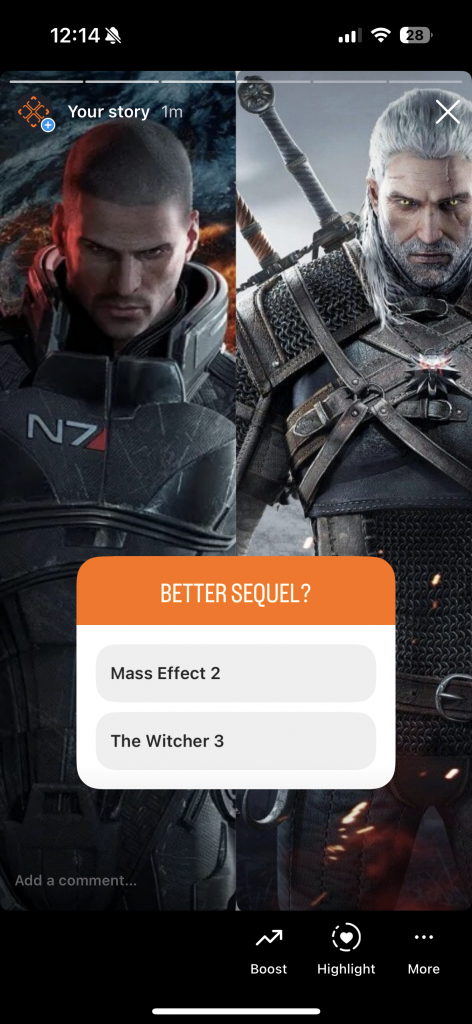
The “What’s The Better Series Sequel?” story post shown above featured one starting question and four follow-up questions. Every follow-up requires a user interaction, allowing for increased time on the page and interaction numbers.
Facebook Stories are very useful for keeping our fans engaged, especially on mobile, where stories are highlighted at the top of the main page.
Direct User Engagement With Facebook Stories
If you want to supercharge your community, using Facebook Stories to create user-guided stories and personalized responses is a next-level type of engagement strategy.
In the gallery below, we created a question about horror-based video games because horror games are popular among our audience.
After users entered their responses, our social media team created new Facebook Story posts based on the most popular answers or responded directly back to users in private messages with positive comments about the games they included in their responses.
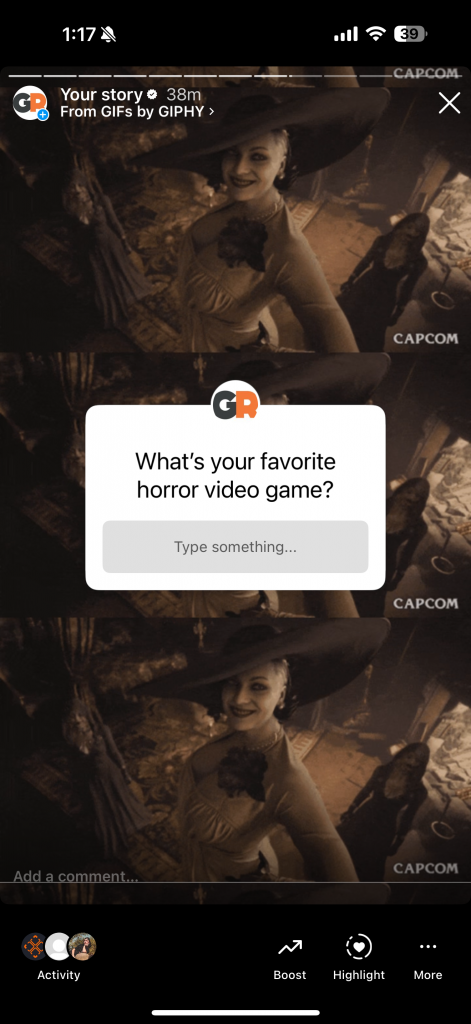
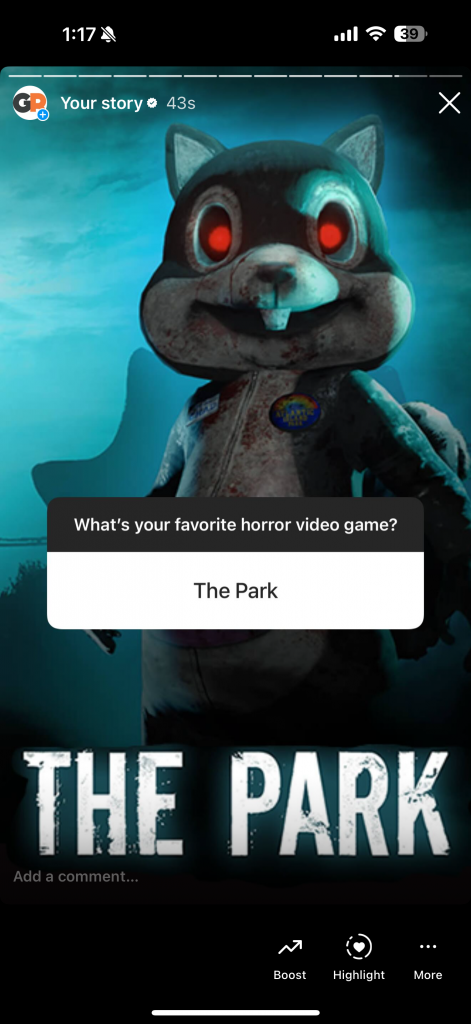
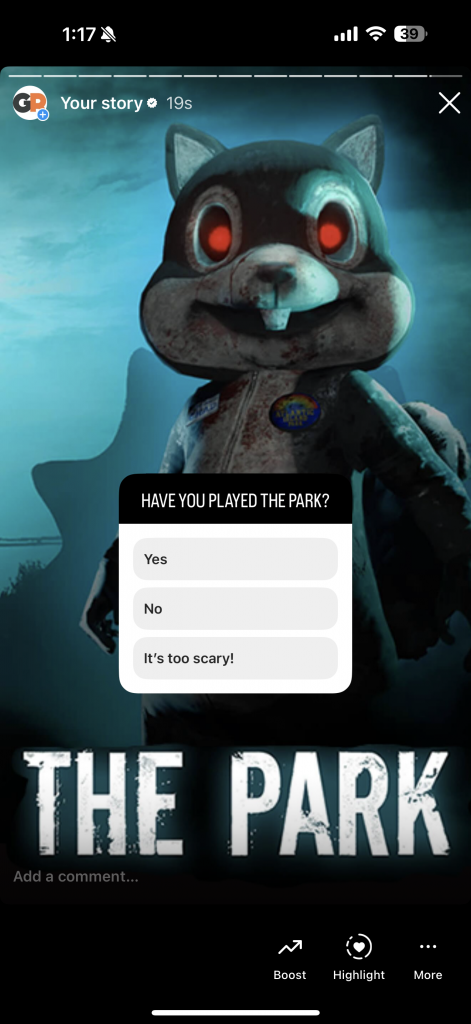
This type of engagement takes additional time and resources; however, it’s also a great way to determine what to include in future posts that will likely receive high levels of engagement.
Text-Based Posts
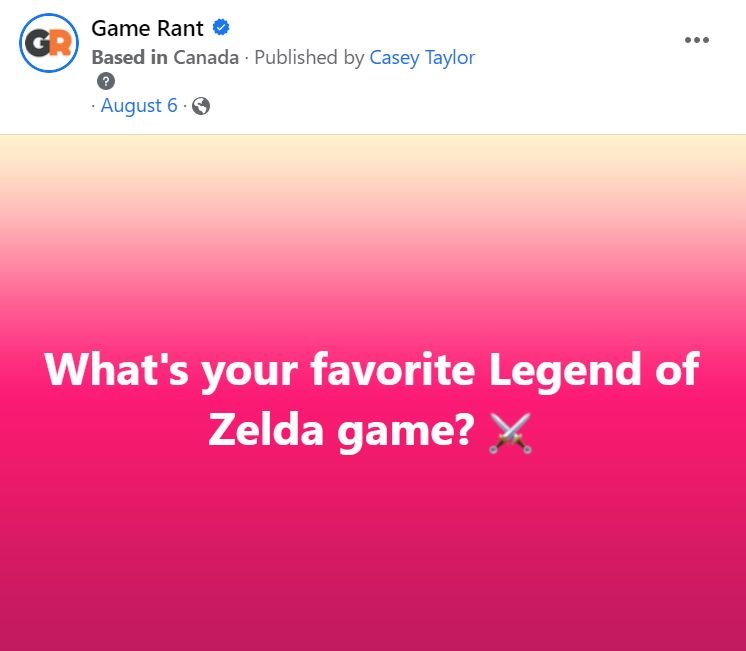
While not the most common part of our posting cadence, text-based questions, often fueled by standard Facebook background images, allow us to discover what games our community loves to discuss and deep-dive into what they’d like to see more of from our page and our publications.
Text-based posts tend to drive high impressions and comment engagement, and they also give us the bonus of sharing insights with our editorial teams.
We particularly love text-based questions because we can choose to ramp up certain games based on user feedback or post fewer of certain games if our community is cooling on them.
The Importance Of Using All Post Types On Facebook
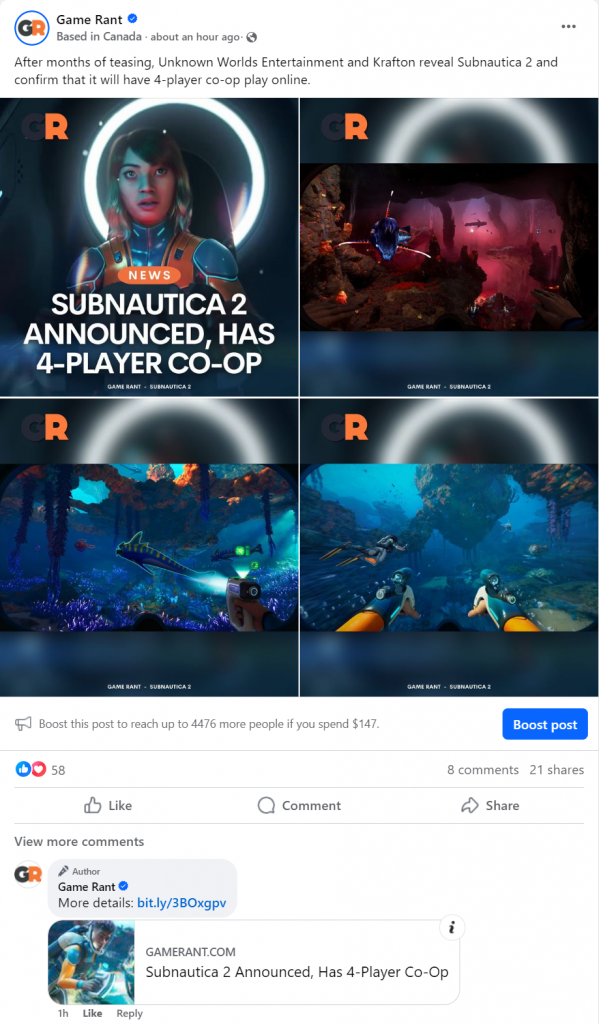
One area of social media management holds true across every platform: Using the technologies provided by a social media platform tends to reap huge rewards. When Facebook builds new ways to engage with users, use that technology before your competitors.
Focusing on video with no photo posts or moving heavily into stories with no link-based posts is a recipe for failure. As you develop your Facebook strategy, be aware of how each post type affects page health.
In the photo above, we dove into Facebook photo galleries combined with a first comment post. Mixing and matching the various engagement types offered by Meta is an excellent way to experiment with your audience to determine what type of posts they prefer.
Pro Tip: In our discussions, most social networks have emphasized the technological advantage of using their built-in tech. For example, TikTok’s partnerships team said using their caption technology, stickers, and other editing features provides the TikTok algorithm with more information, allowing for the potential to scale video efforts more effectively.
Final Thoughts On The Importance Of Facebook Engagement
Facebook is a community-based platform. Over the past year, Facebook has continued to release blog posts and share information about the importance of healthy community building. As others, such as Google, shift towards first-party information; building community will become increasingly important on social media, with user-generated content helping drive referral traffic.
As a general rule of thumb, our social media coordinators focus on a 75/25 split, using proven content types and posting strategies 75% of the time while reserving one-fourth of our posts for experimentation. Just as algorithms change, users’ habits also change, and understanding those changes requires a lot of A/B testing and general experimentation.
What are you doing to spur healthy Facebook engagement?